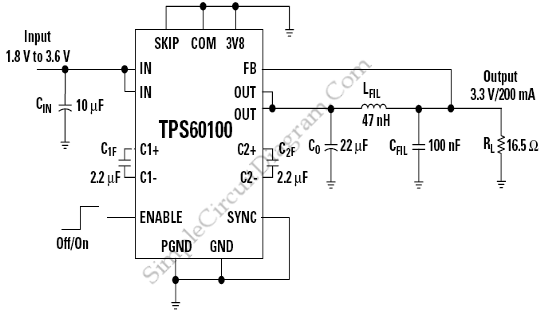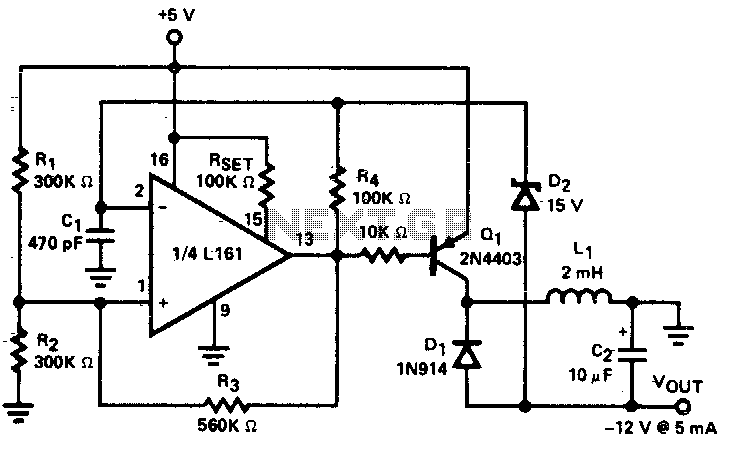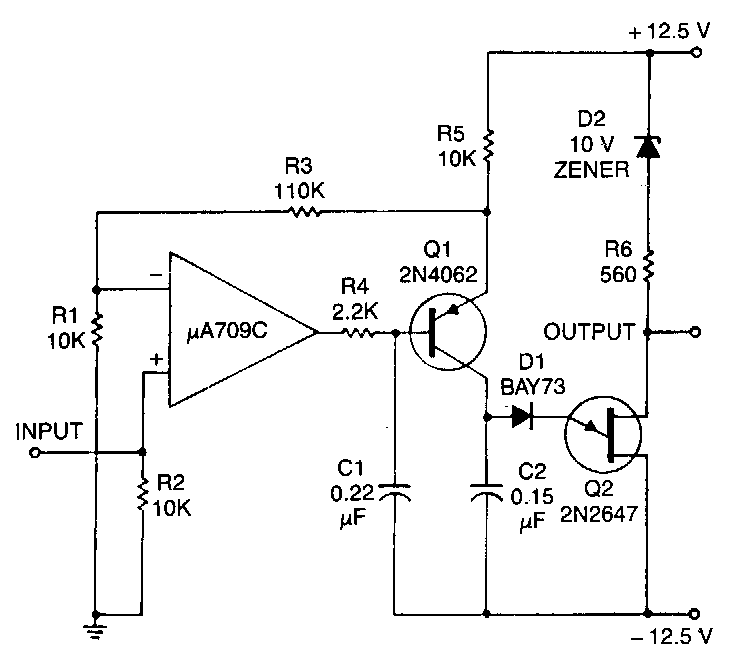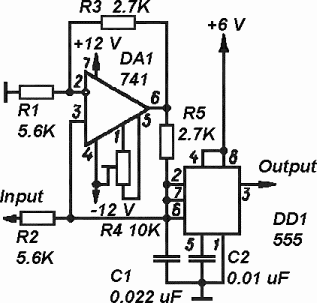
regulated dc to dc converter
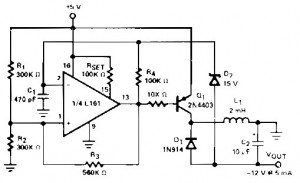
A regulated DC to DC converter utilizing the Micro Power Quad Comparator L161 integrated circuit, which features ultra-low power consumption. This circuit is designed to convert 5V DC to 12V DC at a current output of 5mA.
The circuit employs the L161 IC, which is known for its low power consumption characteristics, making it suitable for battery-operated devices and energy-efficient applications. The converter functions by utilizing a feedback mechanism to regulate the output voltage, ensuring that the desired 12V DC is consistently achieved from the 5V DC input.
Key components of the circuit include the L161 comparator, resistors for setting the feedback voltage, and capacitors for stabilizing the output and filtering any noise. The design may also incorporate inductors to smooth the transition between the input and output voltages, reducing ripple and improving overall performance.
The output current of 5mA indicates that this converter is intended for low-power applications, where efficiency and minimal energy loss are critical. The layout of the circuit should be carefully designed to minimize parasitic effects and ensure stable operation across varying load conditions.
In summary, this DC to DC converter circuit offers a compact and efficient solution for stepping up voltage levels in low-power applications, leveraging the capabilities of the L161 IC to provide reliable performance.Regulated DC to DC converter based on Micro Power Quad Comparator L161 IC that have ultra low power consumption, the circuit converts 5VDC to 12V DC at 5mA.. 🔗 External reference
The circuit employs the L161 IC, which is known for its low power consumption characteristics, making it suitable for battery-operated devices and energy-efficient applications. The converter functions by utilizing a feedback mechanism to regulate the output voltage, ensuring that the desired 12V DC is consistently achieved from the 5V DC input.
Key components of the circuit include the L161 comparator, resistors for setting the feedback voltage, and capacitors for stabilizing the output and filtering any noise. The design may also incorporate inductors to smooth the transition between the input and output voltages, reducing ripple and improving overall performance.
The output current of 5mA indicates that this converter is intended for low-power applications, where efficiency and minimal energy loss are critical. The layout of the circuit should be carefully designed to minimize parasitic effects and ensure stable operation across varying load conditions.
In summary, this DC to DC converter circuit offers a compact and efficient solution for stepping up voltage levels in low-power applications, leveraging the capabilities of the L161 IC to provide reliable performance.Regulated DC to DC converter based on Micro Power Quad Comparator L161 IC that have ultra low power consumption, the circuit converts 5VDC to 12V DC at 5mA.. 🔗 External reference
